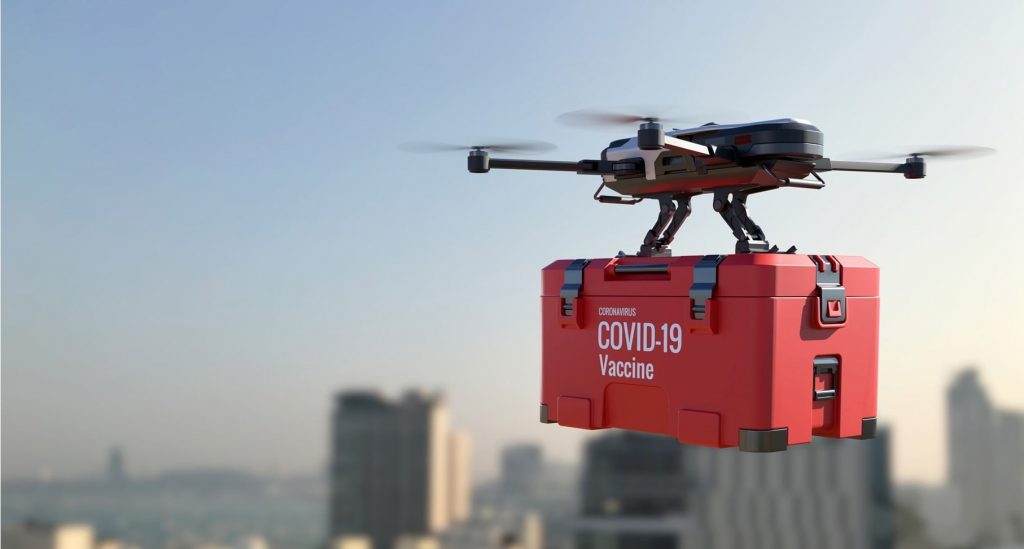Drone weight lifting capacity depends upon the following factors.
- Type of Drone
- Battery capacity
- Size and number of propellers
- Motors used in Drone
Each drone is wired differently with a varying match of the specifications. So, for every drone, weight lifting capacity differs from another.
In this article, I will tell you about how the above factors affect weight lifting capacity and approximate payload for each class of drones.
Table of Content
- What is Payload?
- Type of Drone (according to purpose)
- How much weight can a Drone lift?
- Factors affecting the Weight Lifting Capacity of a Drone
- Conclusion
Now without any further ado, let’s start,
What is Payload?
Drone’s weight lifting capacity is known as “Payload”.
Payload doesn’t include the weight of the frame, battery, propellers, and motors because these are the construction components of a drone.
Instead, the payload is measured in terms of additional weight such as the camera, GPS, sensors, and other additionally mounted accessories on Drones.
Types of Drone (according to the purpose)
Drones can be classified in various ways according to purpose and construction.
But for this article’s sake, we are going to consider the types of Drone depending upon their purpose.
- Hobby
- Professional
Hobby drones are for learning drone flying, sports, photography, FPV, etc. And, a professional drone is a machine specially designed for carrying weights, drop shipping, military, cinematography, mapping, farming, etc.
How much weight can a Drone lift? (Payload Capacity)
The weight lifting capacity or payload for each class of Drone varies drastically and depends upon constructional parts like battery and number of the propellers.
Few drones are smaller than the size of the palm of your hands. They are known as Toy Drones and can’t carry weight.
#1 – Hobby Drone
For hobby drones, the weight lifting capacity ranges from 200 gm to 2 kg.
This much weight is good to go for them, as in most cases, these drones are meant to carry small cameras, extra batteries, GPS, etc.
The Mavic Mini 2 like hobby drone has a weight lifting capacity of 200 gm to 300 gm.
#2 – Professional Drone
For professional drones, the payload capacity is 3 kg to 200 kg.
You might wonder after hearing this much payload capacity, but the design of a professional drone is focused on only two things,
- Payload
- Maximum flying time
Drone’s payload capacity got a significant breakthrough after the launch of Griff 300.
This Drone is capable of lifting 235 kg and can fly for 45 minutes. It can carry humans from one place to another.
That is an insane performance by a drone to this date!
Factors affecting Weight Lifting capacity of a Drone
With the increase in payload, drone manufacturers face the challenge of decreased performance.
Because with added weight, you will notice a decrease in
- Flying time
- Flying range
So to improve this decrease in performance, designers have to,
- Increase battery capacity
- Increase size and number of the propellers
- Use big and efficient motors
- Use a more sturdy and robust frame
It is clear from the above points that the use of efficient and quality components in a drone can massively improve the Payload capacity.
Let’s discuss the above factors in detail,
1. Battery Capacity
Drones use LiPo batteries to deliver excellent performance.
The battery capacity decides the flying time of the drone.
But as the payload capacity increases, the flying time decreases drastically.
So to overcome this problem, professional drones use batteries with more capacity.
2. Propeller (Size and Number)
Depending on the number of propellers, the drones can be classified into several categories,
- Quadcopter
- Hexacopter
- Octocopter
The Griff 300 is an Octocopter Drone with eight propellers.
Increased propeller number and size improve the thrust of a drone, which let it lift more weight.
3. Motors
Without motors and propellers, a drone cannot get off the ground [fly]. Both motors and propellers largely contribute to increasing the payload capacity of a drone.
Mostly BLDC (Brushless DC) motors are used in making a drone.
They are efficient and more powerful than brushed motors.
The quality motors improve the thrust capability of drones.
4. Frame
With increased payload, it becomes vital to use a robust frame.
Generally, Carbon Fiber-reinforced Composites, Thermoplastics (polyester, nylon, polystyrene), and aluminum is used to make drone frames.
Conclusion
I hope this article helped you to understand drone weight lifting capacity in detail. For more doubts, you can comment below. I would love to help.
If you are about to buy a drone for hobby purposes, then check out our following articles,
Still here, then let us know how much weight you want your Drone/UAV to lift by commenting below.
Maybe we can suggest you a drone for that!
